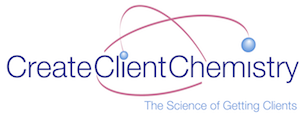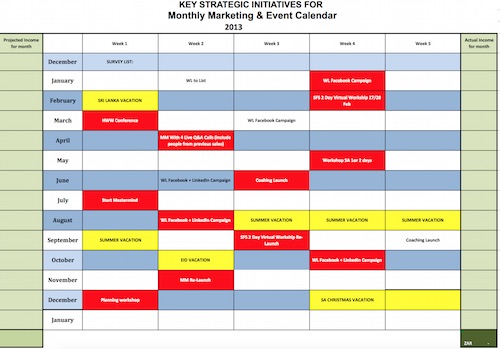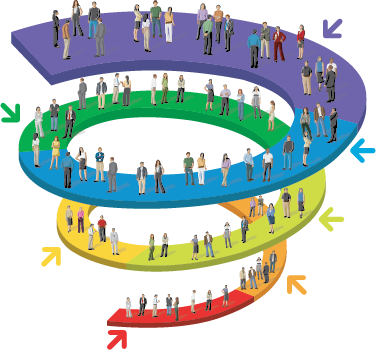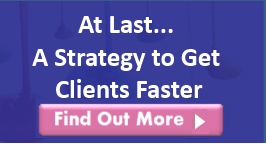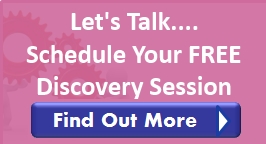
by Francis | Marketing Tips, Online Marketing
 As a solo-preneur, the #1 goal of having a website is to attract more clients, right?
As a solo-preneur, the #1 goal of having a website is to attract more clients, right?
When someone new lands on your site, you want them to stay a bit longer, browse around and when they like what they see, take some sort of action… calling for an appointment or signing up for your mailing list.
This however pose a huge challenge for website owners.
The reason?
Competition on the web is increasing daily.
You do not only compete with other websites in your niche. You also compete with Social Media, Email, Smartphones, Online Games, News sites… all designed to minimise the time people spend on yours!
And on top of that you also compete with the dwindling attention span of people these days.
According to recent research by the National Center for Biotechnology, the average attention span of people is about 9 seconds, and the average website visitor has an attention span of 3-5 seconds the first time they’re on your site.
Not very good news for us as solo-preneurs…
So to use your website as a client attraction tool, you have to grab your visitor’s attention within the first couple of seconds, because only when you have their attention they’ll be persuaded to stay a bit longer and hopefully take the action you want them to take.
So, here are 4 easy-to-implement tips to grab their attention and get them to stay longer.
1. Know Who You Want To Keep on Your Site
In the first 3 seconds when someone lands on your site they ask the questions:
- What is it?
- Why should I care?
…and you have to instantly answer these questions through your logo, your headlines, your images and eventually every word you write.
Knowing your target audience, who you write for and thus want to keep on your site…PLUS understanding their needs, wants and desires, will make it easier to convey your unique value proposition in those critical first 3 seconds.
So, write your website with your ideal client in mind. The thing is, you don’t know where your visitors will first enter your site. It may be the home page of your website, a blog post, a sales pages or even your contact page. Every single webpage therefor has to convey the message of what you do, who you serve, what their problems are, and how you can transform their lives.
2. Use Striking Headlines
Headlines, and titles, are one of the most important parts of your site, whether it is on your home page, a blog entry, a standard web page, an article, or your sales copy.
Why?
Because your site visitors use headlines to decide whether or not to read further.
And if they don’t read past the headline, it doesn’t matter how good or bad your actual content is, it won’t get read.
So, write headlines that are clear, relevant, exciting and contains a solution to a pain point or challenge your audience have.
3. Make Your Content More Readable.
People don’t read everything on your site. They usually just scan the content. So help them stay longer and encourage them to continue reading by…
- Breaking your content into shorter paragraphs;
- Using subheadings;
- Using lists and bullet points;
- Formatting text with bold, italicize, and underline to emphasize important points
- Creating more white or open spaces.
4. Use Relevant Images
Humans are visual creatures and images help your visitors connect and feel comfortable on your site. It is important to use images that are relevant to the content as it is a way to attract attention and help your reader to visualize the information in a simple way that makes sense to them.
Also select images that align with your audience because remember you want to grab their attention. Thus your images should be appealing to your target audience and not only to you.
Even though the odds are stack up against us in terms of competing with big brands and everything else out there that demands the attention of our ideal clients, these easy-to-implement changes can make a world of difference on your website to help you attract and win more clients through it.
So go out today and create a jaw dropping website to wow your ideal clients, keep them longer on your site and attract them into your client pipeline.
And if you’d like support on crafting a powerful and effective message that magnetizes and gets your web visitors to take action on your site, schedule a free Business Breakthrough Session. Let’s talk.
To Your Success

PS: If you use other easy-to-implement tips and tricks to keep visitors on your site, Please share it with us in the comment section below.
Feel free to use the buttons below to share…

by Francis | Marketing Planning, Marketing Tips
No business can be successful without a proper marketing plan. Creating a plan will help you with starting up your business AND growing it.
 Are you like me?
Are you like me?
When I started my business, I had clear goals of what I wanted to achieve – e.g. how many clients I want to work with and the income levels I want to reach. But at the time, I didn’t really create a solid marketing plan around it.
It was just easy to go with the flow and do what feels right in the moment. Can you relate?
If so, is it working for you?
After my first year in business, I knew this hum-ham approach wasn’t working for me. At all.
What I found, was that without a plan, important projects were often put on hold, or they crept up on me and there was simply no time to create effective marketing campaigns around them, or things were simply forgotten, and at the end of the year, I didn’t reach my business goals.
But then I got a little bit smarter and decided that it is important for me, for my business, and for my life to create a written, yearly marketing plan of what I want to achieve within a given year.
I am not talking about a plan incorporating ALL the little details. I’m just talking about a plan where I can see the whole year at a glance. A plan to make sure that I schedule the most important business and marketing activities, so that I…
- don’t forget about stuff,
- give myself enough time to pull things off and
- easily monitor the progress I make against my goals.
I call this my annual marketing and event calendar.
It’s a 1-page document that incorporates the weeks of every month to give you a full-year at a glance.

Every year, I populate this document with the most important events and projects that require any sort of marketing activities. I also make sure that there is at least one event or marketing campaign each month that can lead to new clients and new income.
Within this plan, I don’t put down specific dates; just a rough idea of when I want to implement or do something. Then, I print a copy and keep it next to my computer (a printed copy is handy for making quick notes and for referencing where I am currently).
The results of this?
For the past 3 years, I not only reached all the goals and activities on the annual plan. I’ve doubled my income year on year.
So for me, a yearly written marketing plan – even if it is just a basic overview of the most important activities – is an absolute must in any business.
Here are 7 reasons why I believe an annual marketing plan is important:
1. An annual plan will help you clarify your ideas and most important priorities. It will help you determine what you want to focus on for the year, and when you want to focus on it.
2. An annual plan will help you make crucial decisions. With your plan, you know what is important, and is now in a great potition to say “yes” or “no” to opportunities coming your way. With your plan in hand you have more clarity – and the courage – to manage new opportunities rather than to be managed by them.
3. An annual plan will enable you to maintain balance. You’ll be able to quickly see which months are extremely busy and which months are not. It will help you spread out activities so that you do not overwhelm yourself and have enough time to complete things. Also when you are not able to move things around, it will help you to plan in advance on how you will manage those busy times. And, when you find some months are completely empty, it will give you the motivation to find opportunities and activities to grow your client base for that given month.
4. An annual plan serves as a road map for accomplishing what matters most. It gives you a quick glance of what is coming in the next few weeks or months and prompt you to start thinking about those things that will need attention in the near future. It’s like identifying the markers and waypoints along the journey, so that you have enough time to create an action plan for completing them successfully.
5. An annual plan is a valuable financial tool. When planning out your projects and marketing activities per month it is easier to make projections about the number of clients and income per month to ensure it all adds up to your yearly financial goal . Then you can simply evaluate your actual income per month against the projected income to see if you are still on track.
6. An annual plan measures your progress. It tells you where you are and what you still need to do to reach your ultimate goal.
7. An annual plan helps ensure that you don’t finish the year with regrets. For many entrepreneurs, their years are not turning out like they had hoped. They are disappointed, confused, and discouraged. But it doesn’t have to be that way. While you can’t control everything, you can manage your business with a plan and dramatically improve your chances of closing the year on a high note.
So, get started today with creating your own annual plan and let’s make this year your best year, yet.
To Your success

*Photo courtesy of twobee | freedigitalphotos.net

by Francis | Business, Marketing Tips |
 You can save a lot of time, get more clients and run your business more effectively when you use systems for everything you do.
You can save a lot of time, get more clients and run your business more effectively when you use systems for everything you do.
Doing marketing, drawing clients into your pipeline, staying in touch with prospects and clients, scheduling client consultations, converting prospects into clients, keeping records of client communication, billing clients, tracking income and expense etc. etc. are all tasks you do on a regularly (even daily) basis. Creating a system around each of these tasks or activities, makes it easier to do, saves time and can even put your business on autopilot when you are not in the office.
So, what is a system?
Without going too much into details, a system is a set of steps, methods or procedures you follow to carry out a specific activity, perform a task or solve a problem.
Thus, to create a system for a specific activity in your business you’ll need to know all the specific steps you follow – from start to end – to complete that activity.
In practice, creating systems do not need to be complicated. The only requirement is the systems should work best for YOU and YOUR business. Ultimately the purpose of a system is to save you time and to put most of your repetitive tasks on autopilot so they can take care of themselves with no to minimum involvement from you.
Systems save time and put most of your repetitive tasks on autopilot.
Click to Tweet
Here are examples of 5 systems to simplify the process of getting more clients.
Doing Marketing: If networking and frequently attending live events is one of your marketing strategies, a system can simply be to schedule the dates of all the networking events in your calendar. This way you do not have to remember everything as your system will do the work for you. You can even set a reminder for a couple of days before the event to allow for any preparation, if needed. This way you won’t forget about the event and will be well prepared when you attend. Scheduling is a simple system that can help you stay consistent in attending those in-person events, saves time because you know it is scheduled and you’ll be reminded in time, and you’ll feel more confident when you show up, since you had ample time to prepare.
Filling your Client Pipeline: An example of a system to fill your client pipeline is to use your website, email marketing software and a free offer to capture the contact details of visitors to your website. You can direct all your marketing efforts (the people you meet at events, all your off-line and online marketing) to your website and let your well-oiled system takes care of getting these web visitors into your client pipeline so you can stay in touch with them. This is a system that can be set up once. And best of all, it runs on autopilot while you sleep or are miles away on vacation
Staying in touch: It is important to ensure your prospects don’t forget about you. When staying in touch you continuously build relationships with your prospects and keep your services and offerings in front of them. One way to stay in touch is to publish a regular e-zine (electronic newsletter). An example of creating a system around your e-zine is to create a list of topics you want to share with your audience on regular intervals and then to schedule those topics into an editorial calendar of when each will be send out. An important part of this system is also to schedule the time in your calendar to write the content and populate your email marketing system. When you use email marketing software like Aweber, you can write your content in advance and schedule it to go out on a specific date. This saves time and have the added benefit that your communication are send even when you take an extended vacation.
Convert prospects into clients: Once people are interested in working with you, a new client conversion procedure or system can do wonders for your business. An example of a system here is to have a form on your website where prospects can inquire about your services. Once they’ve filled in the form, they receive an automated email to set-up a complimentary discussion where you get together on the phone. For the discussion you can use a specific, pre-developed script or format to lead your prospect from just inquiring about your services to becoming eager and willing to work with you. The system is taking care of all the pre-work and you only have to be there to conduct the discussion and convert the prospect into a new clients.
New Client Intake: When a prospect becomes a client, it is good business practice to give them all the information they need for working effectively with you. An example of a system when a client says “yes” is to have a client information pack (or welcome pack) ready to send to this client. The bulk of this information pack and regular client communications can be pre-developed and only customized per client. This saves a lot of time and prevent you from re-inventing the wheel for each new client.
With workable and automated systems in place, you can simplify and streamline the process of getting clients and accomplish most of your daily client related and administrative tasks in a matter of minutes, not hours.
Systems put time back into your day – time that you can spend on growing your business with clients and income and/or taking a well-deserved break.
Your assignment for today:
- Pick one thing. . . just one thing in your business and create a system around it.
- Start documenting all the steps you take to complete that.
- Evaluate what you can do to automate / facilitate all the repetitive activities to help you save time with this in future.
The ultimate goal is to create systems that don’t require your attention every minute of the day.
To Your Success

P.S. Do you use systems in your business? Tell us about it in the comment box below.

by Francis | Attracting Clients, Business, Marketing Tips
 If you’ve been in business for a while, you would have heard from more than one marketing expert that knowing your target audience and clients REALLY well, is the beginning of a positive upward spiral for attracting more clients to your business.
If you’ve been in business for a while, you would have heard from more than one marketing expert that knowing your target audience and clients REALLY well, is the beginning of a positive upward spiral for attracting more clients to your business.
This speaks for itself, because the better you know your clients, the better you can tailor your marketing message to solve their biggest problems, the better they’ll relate to your message – making it easier for you to attract them and convert them into paying clients.
Thus, knowing your clients is critical to your business success….and it starts with your ability to put yourself in your clients’ shoes – to truly understand who they are and what they need.
So, here are 8 important things to know about your clients that will put your business and client attraction on an upward success spiral.
1) Who are they?
Everyone talks about the importance of defining a target audience and ideal client…yet very few businesses actually do it. However, the clearer you are about who you work with, the easier it will be to get to know them AND to identify places to find them.
2) Where do they spend their time?
Knowing where they spend their time, helps you to also be present – either in person or via your marketing materials.
3) What do they struggle with?
Every business has a number of frustrations and struggles that they want to get rid of. What are those struggles for your clients as it pertains to what you do? Knowing what they struggle with can help you position your business to become their problem solver.
4) Why are they struggling with it?
There is always a reason why people struggle with something. E.g. do they have these struggles due to time constraints or lack of specific knowledge and skills or lack of technology and equipment? Finding the reasons can help you tailor your services and marketing to solve those problems.
5) Why would they work with you?
Do you stand out from your competitors? What will be the deciding factor to help your clients decide that you are the one to work with?
6) Why do they need your services?
Understanding why a client needs your services means that you can approach him at the right moment when he is ready to work with you. E.g. if you provide financial tax support, you can start promoting your tax related expertise during the start of tax season, increasing the likelihood of attracting clients searching for tax help and advice, because they might not feel confident enough to do it themselves or they want to save time.
7) What do they expect when working with you?
Understanding client expectations means you can encourage a positive customer experience from the start and maximize the chance of repeat business. E.g.when you know what they expect, you can bring that into your very first client conversation to put them at ease about working with you. Then ensure you do that to retain their business.
8) What are their top 3-5 priorities / goals?
The more information you have on what your clients’ top priorities are, the better you can position your marketing and your services to assist them reaching those goals faster.
Knowing your clients is a powerful way to propel your business forward. It allows you to make positive changes in your own business to accommodate their unique and varied needs. This helps you stand out and makes you much more client attractive.
To Your Success


by Francis | Marketing Tips |
 People will only react to your marketing message when it is directed to them specifically.
People will only react to your marketing message when it is directed to them specifically.
Let’s look at this practically.
According to statistics, we receive on average anywhere from 200 – 3000 marketing messages on a daily basis. This can be via email, on TV, over the radio on billboards, in magazines etc. It is quite a lot when you think about it.
The question however is: Do you take note of ALL the marketing messages you receive?
No, off-course not.
But then, when DO you take notice of a commercial or ad?
The answer to that is obviously: When it speaks to you. When you have a specific need or problem or when you want something specific at that moment, you can’t help to listen when someone mentions they can help you with what you want or need. Then you are all ears. Right?
It’s just human – we are programed like that.
The truth is: if a marketing message you see or hear isn’t directed to your SPECIFIC needs at the time you are AWARE of your needs, your mind automatically filters out 99% of all those messages and you simply ignore it! You don’t take action on it.
So what does this mean to you if you want more clients? Or rather what does it mean if you are in the shoes of the clients? Well, hopefully you’ll agree that your ideal clients will probably be the same and only hear your message, but more importantly take action on your message, if you are talking to them and their specific needs.
Thus, for your marketing message to be heard and to get the response you want, it should be addressed to a specific audience who has a specific need you can solve.
I’m a visual learner and to get new ideas, I like to see how things work in practice. So here is a commercial of how a company, Duluth Trading effectively directed their marketing to a specific need of a specific target audience.
While you watch this funny commercial, see if you can identify the target audience as well as the needs it addresses.
Can you see how specific this marketing message is? If you work in an environment where you need strong pants, want to protect your legs or if you’ve ever encountered the sharp teeth of an angry beaver while working, you’ll be interested in getting a pair of these work pants, won’t you? So this is a great example of effective marketing that’s directed to a specific audience and a specific need they have.
So, what I want you to take away from this article is this:
To get more clients, develop a marketing message that will resonate with your potential clients, ensure that it is very specific and addresses the needs / wants of your audience.
Identify the group of people you can serve best with what you do (your target audience). Then, step into their shoes and try to find out EXACTLY what they want and need so you can develop a message that speaks to them.
So, grab a pen and paper and go into as much detail as you can. Be sure you understand the exact problem you’re solving for your clients AND understand how to communicate it clearly to them.
To Your Success

PS: Did you enjoy the article? The greatest compliment you can give me is when you share this with others. It’s really easy! Just use the buttons below. Thanks!

by Francis | Business, Marketing Tips |
 A business that attracts lots of clients is a business that focuses on service excellence.
A business that attracts lots of clients is a business that focuses on service excellence.
Anyone can give a service and find some clients, but someone who focuses on service excellence, will have a business that prosper and will attract clients into long-term relationships.
On vacation to Romania last year, I started to understand what service excellence really means and how it can practically put your business on a totally different level than your competitors.
While exploring the ski slopes of Poiana Brasov, a small town in Romania, we noticed one restaurant that was bustling with customers every single night, while others barely had one or two tables occupied. So, obviously we wanted to try it out. Due to a huge language barrier, we had to call in the help of our hosts at the B&B we were staying to make reservations for us for the second week of our stay. It turned out that this restaurant only take reservations and is normally fully booked for weeks in advance – even in off-peak seasons.
The wait was absolutely worth the while and here’s why.
Upon entering the restaurant, we were personally greeted at the door by the owner of the restaurant and taken to our table which was made of rough, solid sleeper wood and was beautifully laid out with sparkling silverware and fresh flowers (in the middle of winter in snow-filled mountains – that is a big wow). The chairs were covered with snow white sheep skin for added warmth and comfort. A big log fire blazed away in one corner and a traditional band with dancers kept us entertained with great lively music. We were just seated when they brought us warm, freshly baked bread with real butter. We were served complementary glasses of spicy “gluwein” (obviously the price of the wine was worked into the food somewhere, but the mere fact that it was not reflected on the bill made it special). The waiters were extremely efficient. The food was delicious and the presentation was faultless. A small mint chocolate was served with the after meal coffee. The bill was reasonable. All in all one of the best restaurants I’ve ever visited.
So, what made this Romanian restaurant stand out above the other restaurants in that area as well as above many of the so-called five star restaurants we’ve visited in our life before?
Well, everything they did had one goal in mind: Service Excellence.
Making you feel welcome; making you feel good by just being there. Attention to detail and small things like the chocolate with the coffee, fresh flowers, the personal greeting at the door, the beautiful table, clean silverware, the festive atmosphere, the complimentary gluwein, good food and good service – all working together to ensure a full restaurant and customers coming back for more.
That made me think: If a restaurant owner in the middle of nowhere can keep his restaurant fully booked for weeks in advance, how can we apply the same service excellence in our businesses as well.
For me, service excellence is about:
- Showing a great attitude towards your clients;
- Enjoying what you do and knowing how it can benefit your clients;
- Displaying exceptional behaviours and applying those to your client relationships.
- Finding ways to make your clients feel good about your services, your business and themselves because they simply feel good when dealing with you.
Here are some practical ways to create service excellence in your business:
Listen to your clients.
Let your clients talk and take the time to identify exactly what they need by asking questions and concentrating on what they are really saying. Listen to their words, tone of voice, body language, and how they feel. Show that you are listening by making the appropriate responses and suggestions or giving alternative options on how to improve things. By just listening to your clients, they not only feel heard and understood, but you also pick up on valuable nuggets that can help you improve on your service to give them exactly what they want and need.
Be reliable and deliver on what you say.
Reliability is one of the key aspects to any good relationship. If you say, “Your report will be ready on Tuesday”, make sure it is ready and delivered on Tuesday. Do not “over-promise” and then “under-deliver”. Rather do it the other way round – under-promise then over-deliver.
Always play open cards with your clients and be honest in all your negotiations.
Don’t tell a “half” truth or withhold information from your clients, just to “save face” or earn a few more bucks. When you are honest about situations, even when you’ve made a bad mistake, you’ll win the client’s respect and trust.
Deal with complaints promptly.
No one likes hearing complaints, but when a client complains, the chances are there might be a problem or a misunderstanding that is causing it. Listening and solving complaints is an ideal opportunity to restore goodwill, keep a client and build stronger relationships. Handling complaints can also help you to improve your procedures thus eliminating or minimising similar issues in future.
Pay attention to small detail and give them more than expected.
Be creative and give your clients what they do not get elsewhere. People love to get more than they thought they were getting – and it doesn’t need to be something big to be effective. E.g. send a small gift when someone start a big project with you; include a thank-you note when you’ve completed a project; send a message on their birthday– even when you’re not working together anymore; follow-up and thank them even when they don’t buy from you; send them information to help them in their business without expecting anything in return; give them a coupon for a couple of additional service hours. There are all sorts of ways to go the extra mile and to give them more than they expect. They may not say so, but people notice when you make an extra effort and will tell other people.
Creating service excellence in your business doesn’t cost much, but it can mean a world of difference to your clients and your business. If you deliver service excellence consistently, it’s a free form of marketing. Over time your business will become known for its good customer service and you’ll create a business that prosper and attract clients into long-term relationships.
Your take-away assignment for this week
How can you create even more service excellence in your business to make your clients come back for more? Please go ahead and share your ideas in the comment box below. Let’s all learn from each other.
PS: “If you enjoyed this post, the greatest compliment you can give me is when you share this with others. It’s really easy! Just use the buttons below. Thanks! I sincerely appreciate it.”

 As a solo-preneur, the #1 goal of having a website is to attract more clients, right?
As a solo-preneur, the #1 goal of having a website is to attract more clients, right?